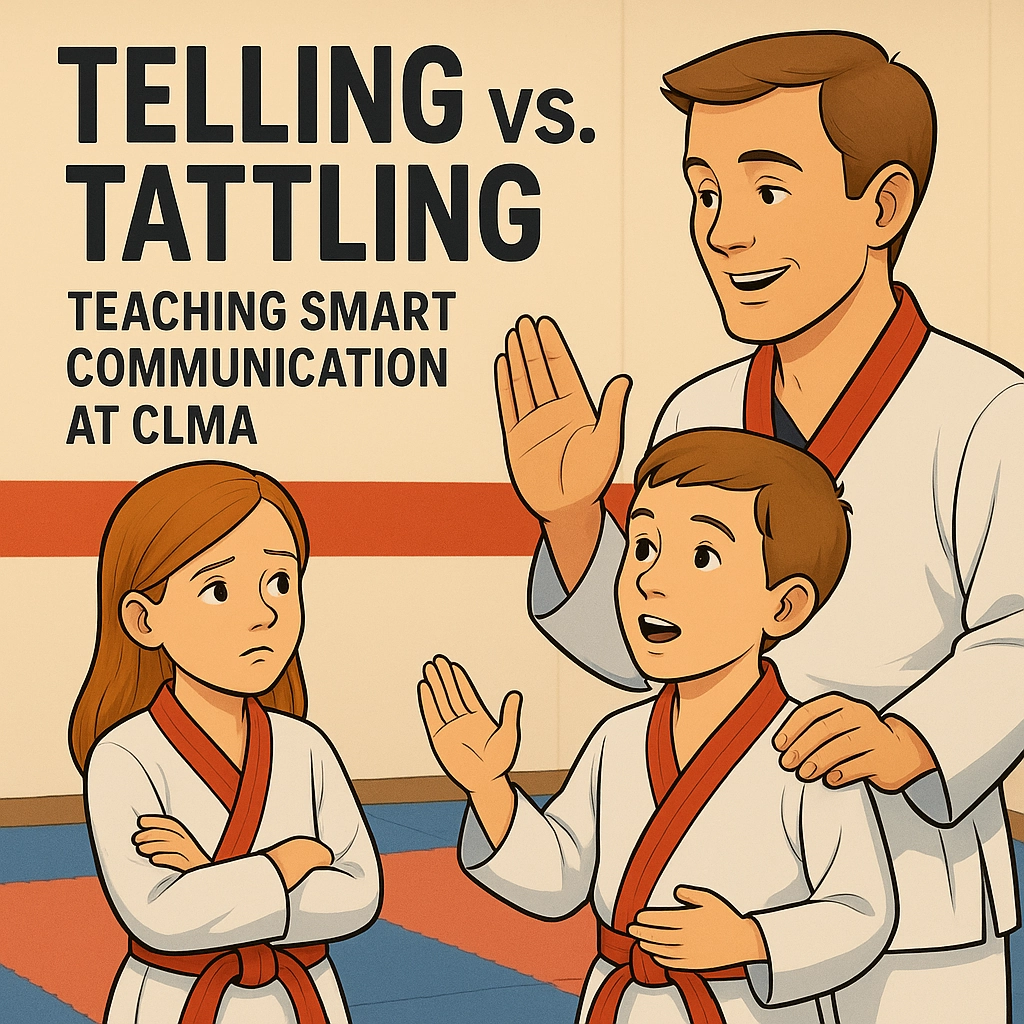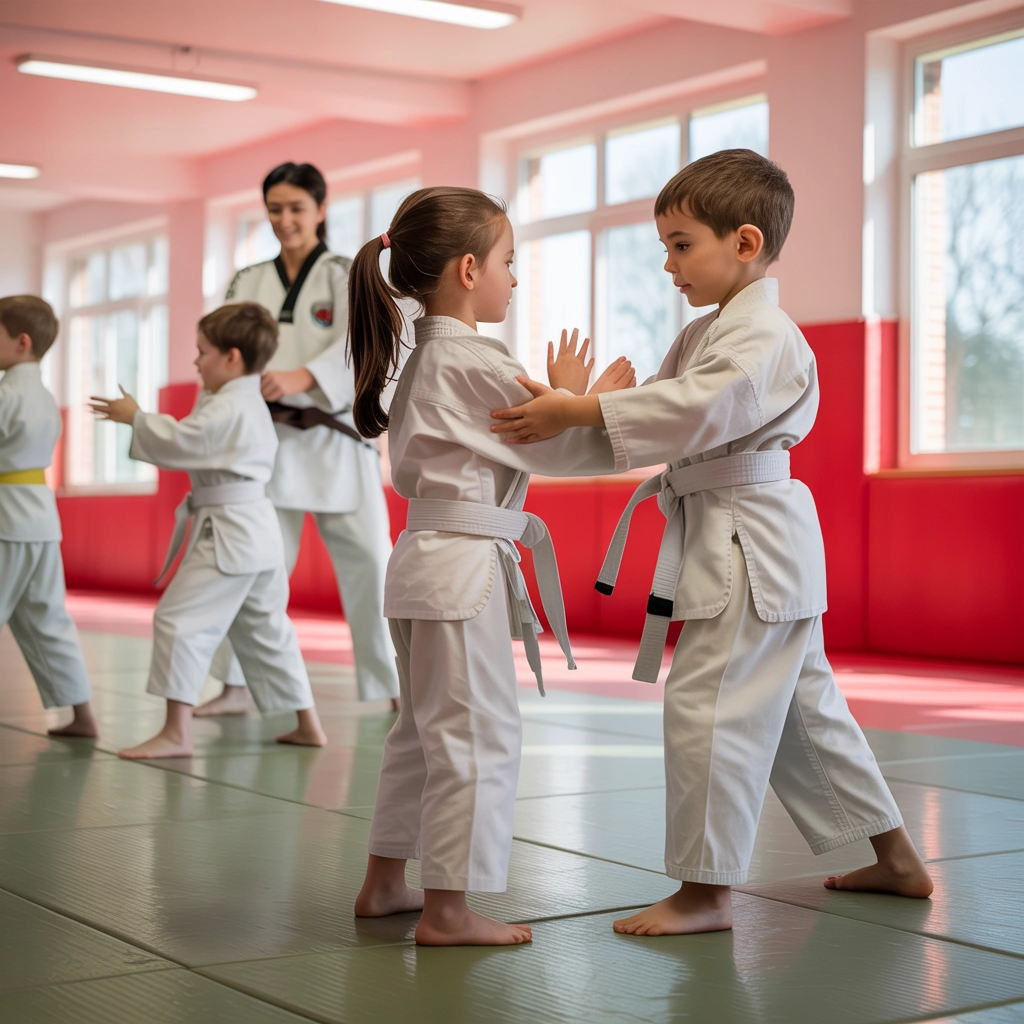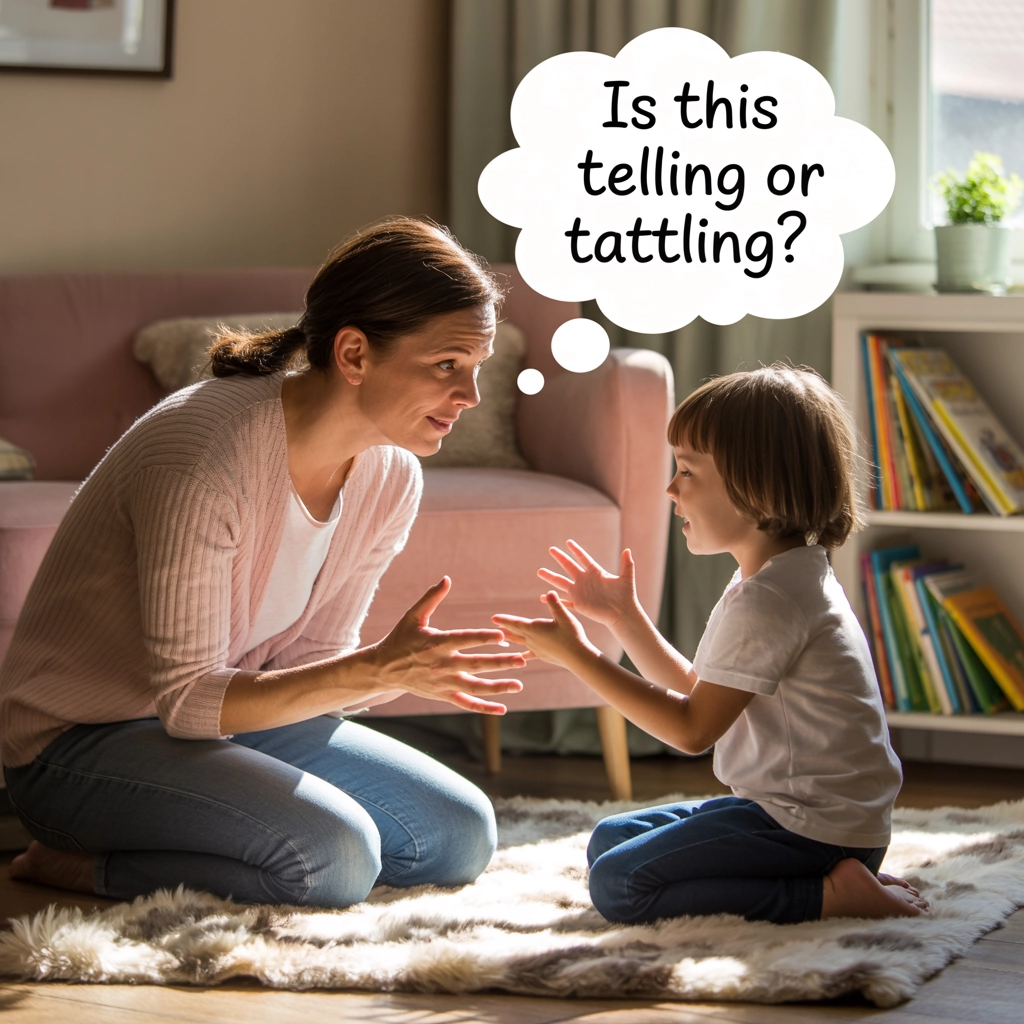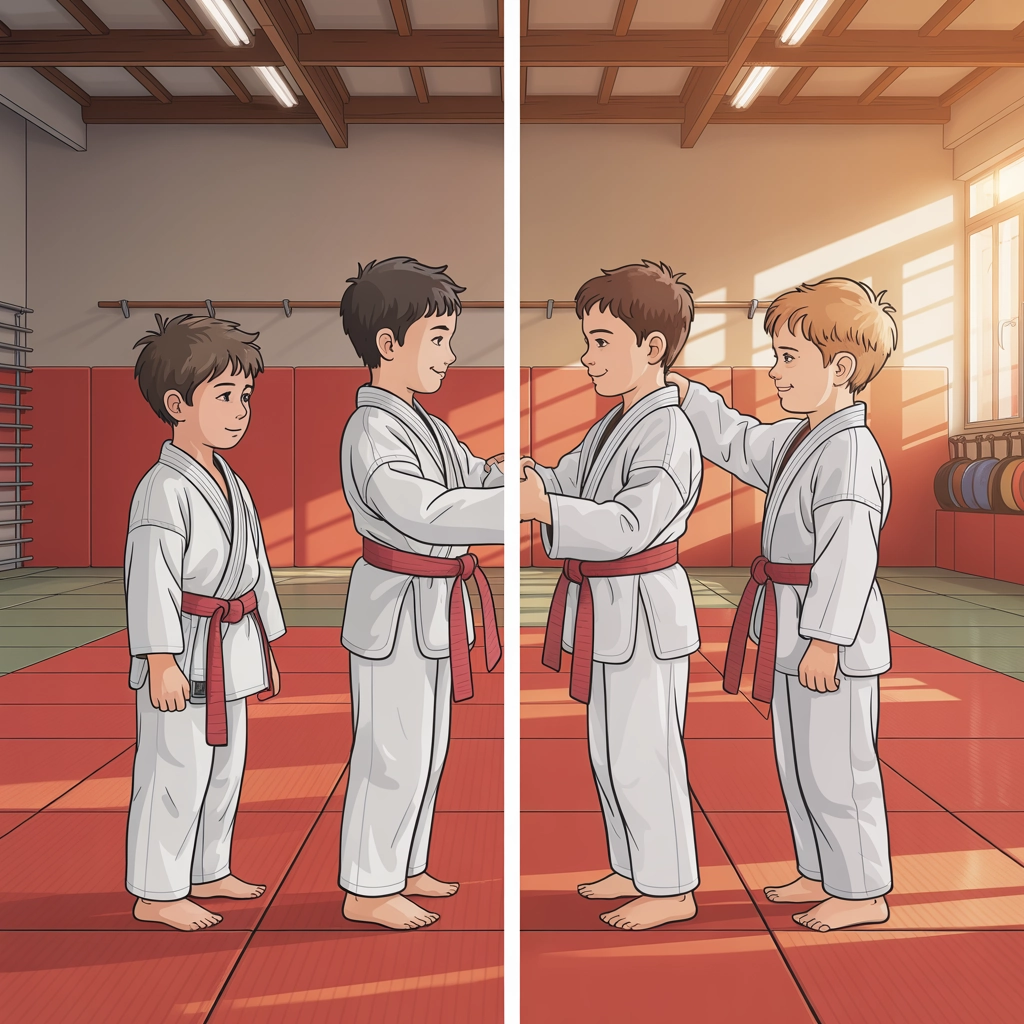
Telling vs. Tattling: Teaching Smart Communication at CLMA
July 4, 2025

Telling vs. Tattling: Teaching Smart Communication at CLMA
The Communication Conundrum Every Parent Faces
Picture this: You’re preparing dinner when your child runs into the kitchen, upset because “Tyler took my turn on the mat!” or “Sophia said my uniform looks weird!” As parents and instructors, we’ve all witnessed the fine line between kids communicating genuine concerns and simply reporting every minor infraction. At Changing Lives Martial Arts, we believe teaching the difference between telling and tattling isn’t just about classroom management—it’s about developing critical life skills that build stronger, more confident communicators.
What’s the Difference, Really?
Before we dive deeper, let’s clarify what we mean by telling versus tattling:
Telling is communicating to keep yourself or others safe. It’s motivated by concern, involves situations where someone could get hurt (physically or emotionally), and typically requires adult intervention because the child cannot handle the situation alone.
Tattling is communicating with the primary goal of getting someone else in trouble. The situation is usually minor, safe, and something the child could potentially handle independently.
The distinction may seem obvious to adults, but for children, these boundaries can be blurry. That’s where martial arts training at CLMA provides the perfect environment to practice these communication skills.
Why This Matters in Martial Arts Training
In our CLMA dojos across Virginia Beach and Chesapeake, communication isn’t an afterthought—it’s woven into the fabric of everything we do. Here’s why mastering the telling vs. tattling distinction matters in martial arts:
- Safety First: Martial arts techniques require clear boundaries. Students need to know when to alert an instructor about potentially unsafe behavior versus handling minor disagreements themselves.
- Respect in Practice: One of our core tenets is respect. Learning when and how to communicate concerns shows respect for instructors’ time and peers’ dignity.
- Building Integrity: Making thoughtful decisions about when to speak up develops integrity—doing the right thing even when it’s difficult.
- Fostering Independence: By learning to distinguish between serious and minor issues, students develop problem-solving skills and self-reliance.
How We Teach Smart Communication at CLMA
Our instructors don’t just teach kicks and punches—they build character through intentional communication lessons:
The 3-Question Test
We teach our students to run through these questions before approaching an instructor:
- Is someone getting hurt or about to get hurt? (Physical or emotional harm)
- Have I tried to solve this problem myself?
- Is this something I need help with right now?
If the answer to the first or third question is “yes,” or if they’ve genuinely tried to resolve the issue themselves, then telling an instructor is appropriate.
Real Dojo Scenarios
We regularly role-play situations like:
- A partner practicing a move with too much contact
- Someone not following the class rules
- Peers making unkind comments
- Equipment being used unsafely
Through these scenarios, students practice making judgment calls about when to involve an instructor and when to use their own communication skills to resolve the situation.
The “I Message” Technique
We teach students to use clear, non-accusatory language:
- “I feel uncomfortable when you practice that kick so close to me. Can we make sure we have enough space?”
- “I would like a turn with the practice pads. When will you be finished?”
This approach focuses on solving problems rather than assigning blame—a key distinction between telling and tattling.
Parents as Communication Coaches
The skills we teach at CLMA need reinforcement at home. Here’s how you can continue the lessons:
Listen Carefully Before Responding
When your child comes to you with information about another person, pause before reacting. Ask clarifying questions:
- “Are you telling me this because someone might get hurt?”
- “What have you tried to do about this yourself?”
- “How do you think I can help in this situation?”
Your thoughtful response models good communication and helps children reflect on their motivations.
Role-Play at Home
Create simple scenarios relevant to your family life and practice appropriate responses. This might include:
- What to do if a sibling takes something without asking
- How to handle it when friends don’t include them in a game
- When to tell a parent about something they observed at school
Praise Smart Communication
When your child makes good judgment calls about when to seek help versus handling situations themselves, acknowledge it specifically:
- “I appreciate how you tried to work it out with your sister before coming to me.”
- “You made a good decision telling me about that situation—that was something an adult needed to know about.”
Beyond the Dojo: Life Skills Being Developed
This telling vs. tattling distinction builds several crucial life skills:
1. Critical Decision-Making
Each time a child decides whether to tell an adult about a situation, they’re exercising decision-making muscles. They’re assessing risk, evaluating the severity of a problem, and determining the appropriate response.
2. Empathy Development
Understanding the difference between telling and tattling requires perspective-taking. Children must consider others’ feelings and motivations, building emotional intelligence that serves them throughout life.
3. Conflict Resolution Skills
When children learn to handle minor interpersonal issues without adult intervention, they’re developing conflict resolution skills. They learn to communicate their needs, listen to others, and find mutually acceptable solutions.
4. Boundary Setting
The telling/tattling distinction helps children understand appropriate boundaries—both when to respect others’ boundaries and when to protect their own.
Communication in Action: The CLMA Difference
At Changing Lives Martial Arts, we’ve seen remarkable transformations in how students communicate. Take 8-year-old Jayden, who started in our program constantly reporting every small issue to instructors. Through consistent coaching and practice, he learned to distinguish between serious concerns and minor problems. Now, he’s not only more independent in class but his teacher reports he’s become a positive leader at school, helping peers resolve conflicts without automatically involving adults.
Or consider 10-year-old Sophia, who was initially reluctant to speak up even when situations warranted it. Through role-playing exercises and building confidence in our supportive environment, she learned that appropriate “telling” is actually a sign of courage and responsibility—not tattling.
Practical Communication Tools for Every Age
For Young Children (4-7):
- Use simple visual cues (green light for telling, red light for tattling)
- Focus on the “helping vs. getting someone in trouble” distinction
- Use children’s books that address this topic to spark discussions
For Elementary Students (8-11):
- Introduce the 3-question test
- Practice “I messages” regularly
- Discuss hypothetical scenarios and have them determine if it’s telling or tattling
For Tweens and Teens (12+):
- Connect the concept to digital communication and social media
- Discuss more nuanced situations where the line between telling and tattling blurs
- Emphasize the leadership role they play with younger students
Bringing It All Together
Teaching the difference between telling and tattling isn’t about enforcing arbitrary rules—it’s about empowering children to become thoughtful communicators who can navigate social situations with confidence and wisdom.
At Changing Lives Martial Arts, we believe these communication skills are just as important as any physical technique we teach. When a child learns to discern when to speak up and when to handle situations independently, they’re developing self-discipline, respect, and integrity—core values that serve them in the dojo and beyond.
Whether your child is already training with us or you’re considering martial arts as an activity, remember that the communication skills they’ll develop are life skills that transfer to school, home, and future workplaces. That’s the CLMA difference—we’re not just teaching martial arts; we’re changing lives through comprehensive character development.
Want to learn more about how our programs build strong communicators and confident kids? Visit our website at https://atakick.com or stop by one of our locations in Virginia Beach or Chesapeake. Together, we can help your child develop the communication skills they need to succeed in all aspects of life.


